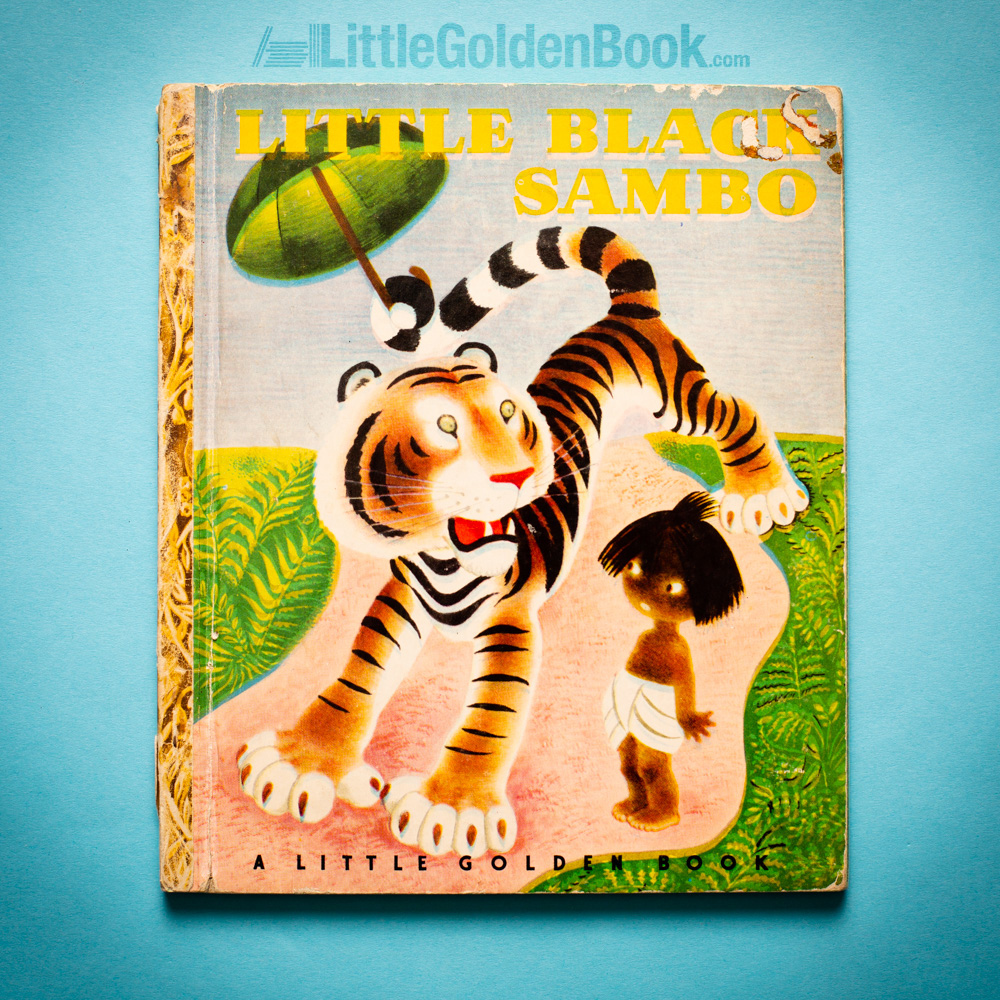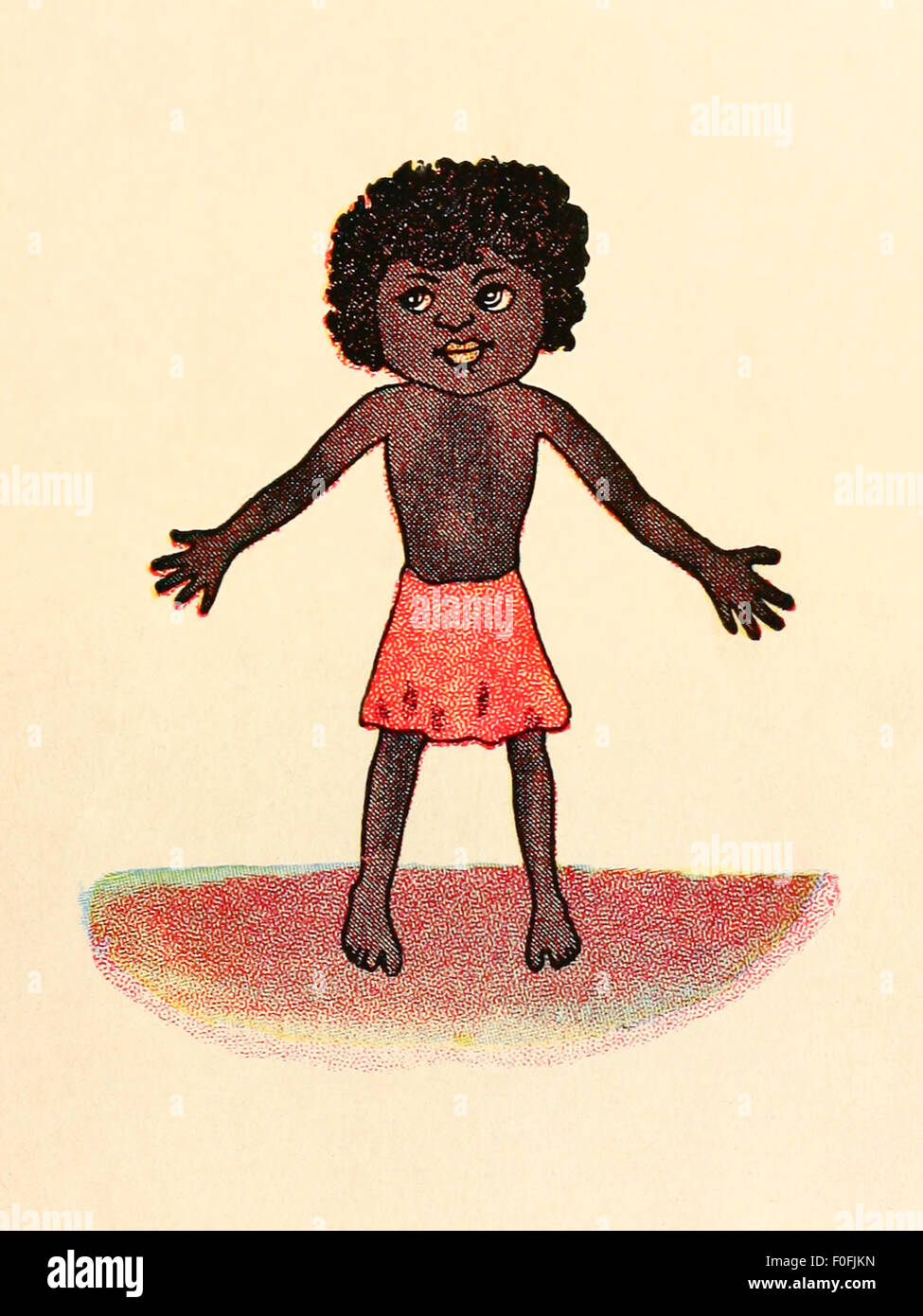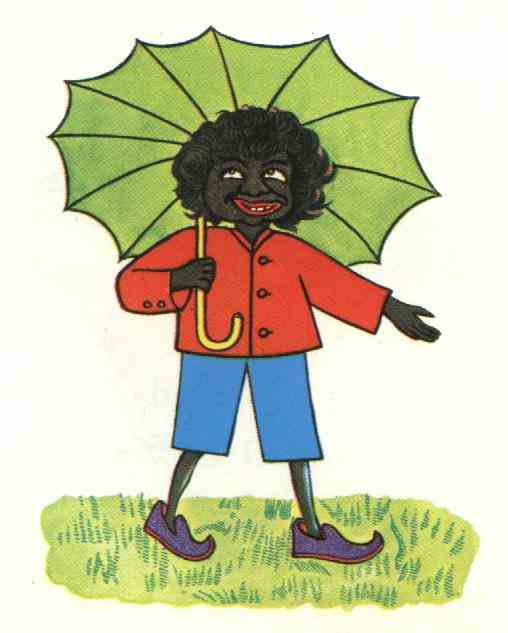Little Black Sambo: A Controversial Tale Revisited
Little Black Sambo has been a subject of debate and discussion for decades. Originally published in 1899 by Helen Bannerman, this classic children's book became both a beloved story and a source of controversy due to its racial implications. As we explore its history, impact, and significance, it is essential to approach the topic with sensitivity and understanding.
The story of Little Black Sambo has sparked widespread debate over its cultural relevance and implications. Despite its initial popularity, the book faced criticism for perpetuating racial stereotypes, particularly against Black individuals. This controversy has led to deeper discussions about representation, diversity, and the importance of cultural sensitivity in literature.
In this article, we will delve into the origins of Little Black Sambo, its cultural impact, and the debates surrounding its legacy. By examining both sides of the argument, we aim to provide a comprehensive understanding of why this book remains a significant topic in literary history.
Read also:Paige Young Sheldon The Rising Star Of Modern Entertainment
Table of Contents
- The Origin of Little Black Sambo
- The Storyline of Little Black Sambo
- Controversy Surrounding Little Black Sambo
- Racial Implications and Stereotypes
- Cultural Significance and Impact
- Modern Perspective on Little Black Sambo
- Adaptations and Reinterpretations
- Educational Value and Lessons
- Parental Guidance and Responsibility
- Conclusion
The Origin of Little Black Sambo
The story of Little Black Sambo was first published in 1899 by Helen Bannerman, a Scottish author. Initially written for her daughters while living in India, the book gained unexpected popularity worldwide. The illustrations, however, played a significant role in shaping the perception of the story, as they often depicted characters in a way that reinforced racial stereotypes.
Despite its origins in India, the book's illustrations were later adapted by American publishers, which contributed to the racial caricatures associated with the story. This adaptation shifted the narrative from its original context, leading to widespread criticism.
Publication and Reception
- Published in 1899 by Helen Bannerman.
- Initially written for her daughters during her time in India.
- Rapidly gained popularity worldwide.
- Illustrations became a focal point of controversy.
The Storyline of Little Black Sambo
At its core, Little Black Sambo is a story about a young boy who outsmarts four tigers. Sambo's bravery and cleverness lead to a triumphant ending where he regains his lost possessions and is celebrated by his parents. The narrative emphasizes themes of intelligence, resourcefulness, and triumph over adversity.
However, the way the story was presented through illustrations and language choices contributed to its controversial nature. The character of Sambo was often depicted in a manner that perpetuated racial stereotypes, overshadowing the positive message of the story.
Key Themes in the Story
- Bravery and intelligence.
- Triumph over adversity.
- Family values and celebration of success.
Controversy Surrounding Little Black Sambo
The controversy surrounding Little Black Sambo primarily stems from its illustrations and language, which many argue perpetuate harmful racial stereotypes. The term "Sambo" itself has been used as a racial slur, further complicating the book's legacy. Critics argue that the story reinforces negative perceptions of Black individuals, particularly in Western societies.
Supporters of the book, however, emphasize its original intent and the positive themes it conveys. They argue that the story's message of bravery and cleverness should not be overshadowed by its problematic presentation.
Read also:Dead Friends Forever Understanding The Concept And Its Impact
Arguments from Both Sides
- Critics: Focus on racial stereotypes and the harm caused by perpetuating negative imagery.
- Supporters: Highlight the story's positive themes and original intent.
Racial Implications and Stereotypes
The racial implications of Little Black Sambo cannot be ignored. The illustrations and language used in the book have been criticized for reinforcing stereotypes about Black individuals. These depictions have contributed to the marginalization and discrimination faced by Black communities.
Research conducted by scholars in the field of literature and cultural studies highlights the impact of such narratives on societal perceptions. Studies show that exposure to racially charged imagery in childhood literature can influence attitudes and beliefs later in life.
Impact on Society
- Reinforcement of racial stereotypes.
- Contribution to systemic discrimination.
- Influence on societal perceptions of race.
Cultural Significance and Impact
Despite its controversies, Little Black Sambo remains culturally significant due to its role in sparking important discussions about race, representation, and diversity in literature. The book's legacy serves as a reminder of the importance of responsible storytelling and the need for inclusive narratives.
Cultural institutions and educators have used the story as a teaching tool to address issues of racial sensitivity and cultural awareness. By examining the history and impact of Little Black Sambo, individuals can gain a deeper understanding of the power of words and images in shaping societal norms.
Teaching Tools and Resources
- Curriculum materials for discussing race and representation.
- Workshops and seminars on cultural sensitivity.
- Guidelines for responsible storytelling in literature.
Modern Perspective on Little Black Sambo
In modern times, the perception of Little Black Sambo has evolved significantly. Many educators and parents approach the story with caution, using it as an opportunity to discuss its historical context and cultural implications. The focus has shifted from simply reading the story to critically analyzing its impact.
Efforts to reinterpret the story in a more inclusive manner have led to new adaptations that aim to preserve its original themes while addressing its problematic elements. These adaptations emphasize the importance of cultural sensitivity and diversity in storytelling.
New Adaptations
- Rewritten versions with updated illustrations and language.
- Stories that celebrate diversity and inclusion.
- Collaborations with authors from diverse backgrounds.
Adaptations and Reinterpretations
Several adaptations of Little Black Sambo have been created to address the concerns surrounding its original presentation. These adaptations aim to preserve the story's positive themes while eliminating harmful stereotypes. By reimagining the narrative, authors and illustrators have sought to create a more inclusive and culturally sensitive version of the story.
Some adaptations focus on retelling the story from a different cultural perspective, while others emphasize the universal themes of bravery and intelligence. These efforts highlight the importance of diversity in literature and the need for stories that reflect the experiences of all individuals.
Examples of Adaptations
- Retellings with diverse characters and settings.
- Stories that incorporate multicultural elements.
- Collaborations with authors and illustrators from various backgrounds.
Educational Value and Lessons
Little Black Sambo offers valuable lessons about the importance of cultural sensitivity and responsible storytelling. By examining the story's history and impact, individuals can gain a deeper understanding of the power of literature in shaping societal norms and values.
Educators can use the story as a tool for teaching critical thinking and cultural awareness. By encouraging students to analyze the story's themes and implications, educators can foster a more inclusive and empathetic learning environment.
Teaching Critical Thinking
- Encouraging students to analyze the story's themes.
- Discussing the impact of racial stereotypes in literature.
- Promoting empathy and cultural understanding.
Parental Guidance and Responsibility
Parents play a crucial role in guiding their children's understanding of stories like Little Black Sambo. By providing context and encouraging critical thinking, parents can help their children navigate complex issues related to race and representation.
Resources such as discussion guides and educational materials can assist parents in addressing these topics effectively. By fostering open and honest conversations, parents can empower their children to become more culturally aware and empathetic individuals.
Guidance for Parents
- Provide historical and cultural context for the story.
- Encourage open discussions about race and representation.
- Use the story as a teaching tool for cultural sensitivity.
Conclusion
In conclusion, Little Black Sambo remains a significant topic in literary history due to its complex legacy and cultural implications. While the story's original intent was to convey positive themes of bravery and intelligence, its presentation through illustrations and language has led to widespread controversy. By examining both sides of the argument, we can gain a deeper understanding of the importance of responsible storytelling and cultural sensitivity in literature.
We invite you to share your thoughts and engage in discussions about this topic. Your feedback and insights can contribute to a more informed and empathetic approach to addressing issues of race and representation in literature. Additionally, we encourage you to explore other articles on our site that delve into similar topics, promoting a more inclusive and diverse understanding of the world around us.
Marvin Marvin Series: A Comprehensive Dive Into The Iconic Show
Phil Davis Actor: The Journey Of A Remarkable Talent
Soundtrack From Tangled: A Musical Journey Into Disney's Enchanted World


